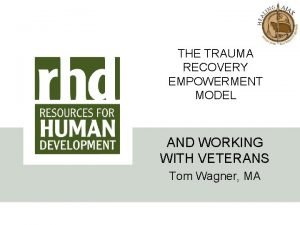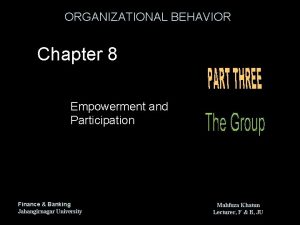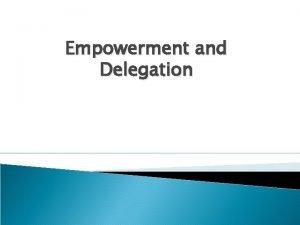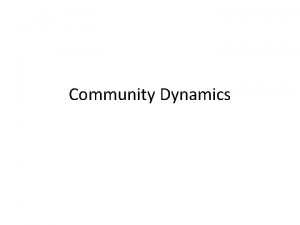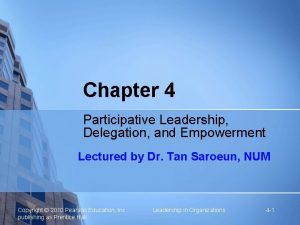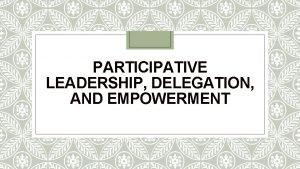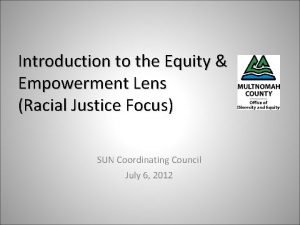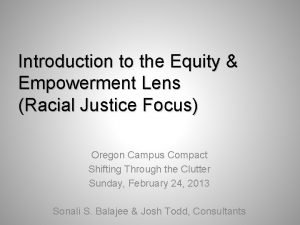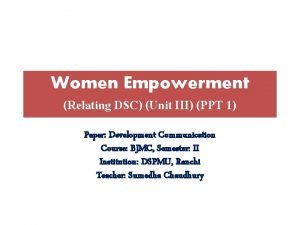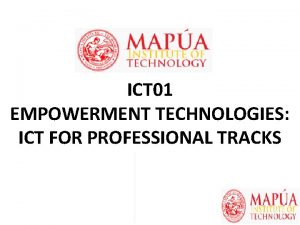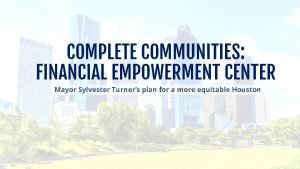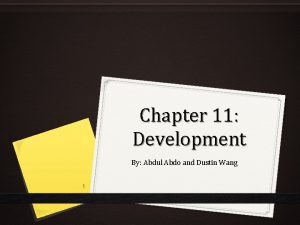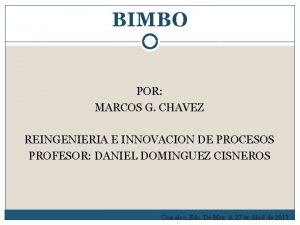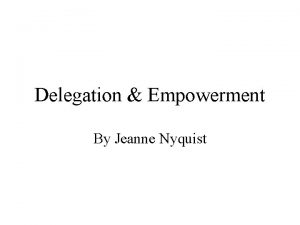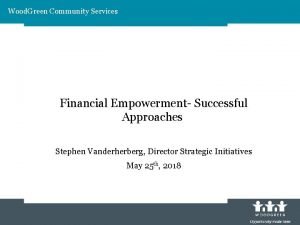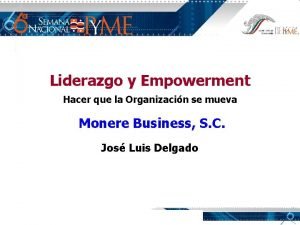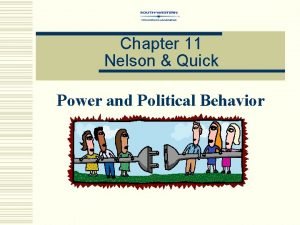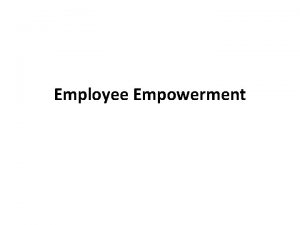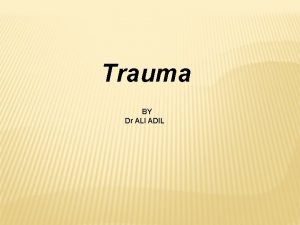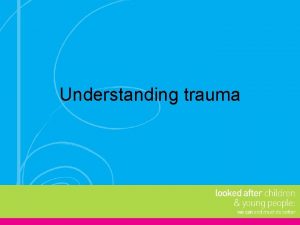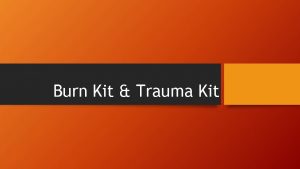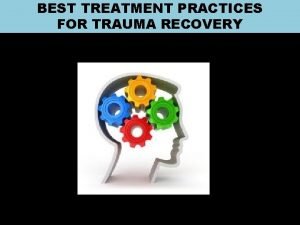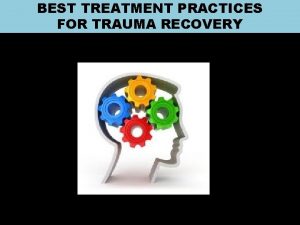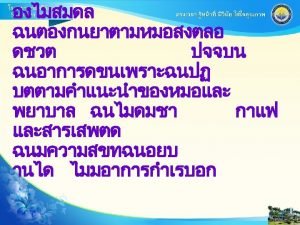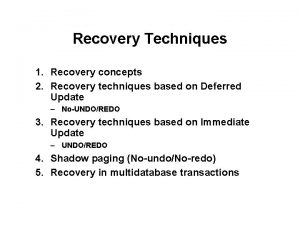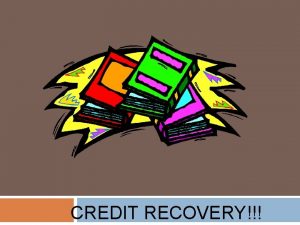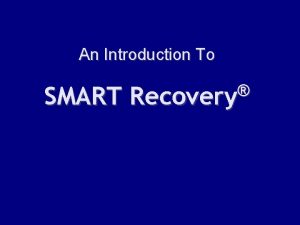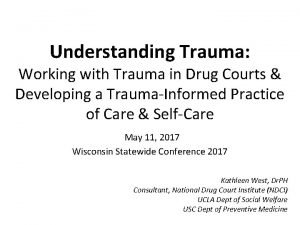THE TRAUMA RECOVERY EMPOWERMENT MODEL AND WORKING WITH



































- Slides: 35

THE TRAUMA RECOVERY EMPOWERMENT MODEL AND WORKING WITH VETERANS Tom Wagner, MA

Agenda • • • Intro What Is Trauma? Trauma Recovery Empowerment Model Veteran Culture Questions


DEFINITION Direct personal experience of an event that involves an actual or perceived threat of death or injury A sudden shock to the system

TYPES • • • Physical violence Psychological maltreatment Witnessing violence Neglect Sudden loss Manmade and natural disasters

TRAUMA • Trauma, MH issues, D&A use and homelessness are tied in a recurring cycle • Exposure to violence and abuse is often not identified as significant • Violence not seen as impacting other life problems • Under reported and under recognized

Trauma Informed Approach • Safety: Ensuring physical and emotional safety • Trustworthiness: Maximizing trustworthiness, making tasks clear, and maintaining appropriate boundaries • Choice: Prioritizing consumer choice and control • Collaboration: Maximizing collaboration and sharing of power with consumers • Empowerment: Prioritizing consumer empowerment and skill-building

TREM • Developed by Community Connections in Washington, DC • First designed to work with female abuse survivors • Modified to work with a variety of populations

ASSUMPTIONS • Many individuals find it difficult to label and describe emotions • Disconnection dilemma • All or nothing responses • Trauma severs connections with one’s family, one’s community and one’s self

ASSUMPTIONS CONT. • People who experience repeated trauma in childhood often lack proper coping skills • Trauma survivors bring an array of skills and strengths to the recovery process • Dysfunctional behaviors may be legitimate coping responses to trauma • Trauma has physical, emotional, cognitive, behavioral and spiritual outcomes

MTREM • Male Messages, Emotions and Relationships • Gaining an Understanding of Trauma • Recovery Skills

PART 1 • • • Introduction Male Messages Trust Friendship Anger and Behavior Anger and Thinking

PART 1 • • • Fear Hurt and Loss Hope Shame Sex Intimacy

PART 2 • • Gaining an Understanding of Trauma What Is Emotional Abuse? What Is Physical Abuse What Is Sexual Abuse and Psychological/Emotional Sx Trauma and Addictive or Compulsive Behs Abuse and Relationships

PART 3 • • Revenge, Acceptance and Forgiveness Negotiating Family Relationships Communication Skills Positive Problem Solving: Overcoming Self -Defeating Behaviors • Managing Feeling Out of Control • Realistic Goals and Empowerment

STRUCTURE • • • Check In Session Rationale Goals Questions Exercises 1 hour 15 Minutes

CONCEPT • Not designed to deeply explore one’s trauma story • Emphasis on making connections between abuse and current functioning and assisting in recovery skill building • One’s report of trauma is drawn into the group context

VET-TREM • Modified version of original TREM • Worked with Community Connections to develop the model • Integrates various aspects of Military Culture • Peer to peer approach

“I, …. , Do Solemnly Swear That I Will Protect and Defend …”

INDOCTRINATION

Basic Tenets of Military Culture • • • Duty, Honor, Country Discipline Professional Ethos Ceremony and Etiquette Cohesion

Cultural Comparison Civilian vs. Military Civilian • Uniqueness • Individuality • Choices • Relaxation Military • Uniformity • Anonymity • Orders • Boredom

Cultural Comparison Civilian vs. Military (cont. ) Civilian • Luxury • Disorder • Emotionality • Togetherness Military • Hard Work • Chain of Command • Stoicism • Team Work

The Average Workday Is When The Mission Is Complete

The Very Skills That Are Taught To Follow In Combat Are The Skills That Are A Risk At Home

Military Members Share Common Life Experiences That The General Population Does Not

“SUCK IT UP AND DRIVE ON!!!”

Barriers To Seeking Treatment 65% - FEAR OF BEING PERCEIVED AS WEAK 63% - FEAR THAT LEADERSHIP WILL TREAT THEM DIFFERENTLY 59% - FEAR OTHERS WILL HAVE LESS CONFIDENCE IN THEM

12% of U. S. Population Are Veterans

30% Of Treatment At The V. A. Is For PTSD Estimated 20% Of The Veteran Population Suffers From PTSD

Suicide Rates • 22 Veterans Commit Suicide Every Day • That’s 1 Every 65 Minutes • In 2012 There Were 349 Active Duty Suicides

Leave No One Behind

Program Overview • Began in 2009 – Goal was to aid in the reintegration of Iraq and Afghanistan War veterans’ transition back into civilian life. – Based on a Peer to Peer Approach: • Veterans helping Veterans – Utilizes a trauma-recovery psycho-educational group support model with modifications for combat veterans.

What are people saying? “I Feel Like I Have a Future, Again” - An Iraq veteran talking about his struggle, and how Healing Ajax has helped him. “As a Veteran, Healing Ajax has helped me with needs that were hidden from me, needs that were masked or cloaked. These needs were met among a group of soldiers who were traumatized just like me. We became trauma educated, learning an approach to trauma, empowerment and trauma recovery. ”

Things To Keep In Mind • Be culturally competent • Never Say “You’re Lucky” • Know or have access to someone that understands military culture • Before you ask be sure you are prepared to listen • Don’t speak the jargon unless you know it • Be ready for trust factor to take time
 Trauma recovery and empowerment model
Trauma recovery and empowerment model Hot working and cold working difference
Hot working and cold working difference Cold working
Cold working Machining operations
Machining operations Prinsip dasar proses pengerjaan panas yang benar adalah
Prinsip dasar proses pengerjaan panas yang benar adalah Smart vs hard working
Smart vs hard working Empowerment and participation in organizational behavior
Empowerment and participation in organizational behavior Purpose of delegation
Purpose of delegation Dynamics of community
Dynamics of community Leadership delegation and empowerment
Leadership delegation and empowerment Participative leadership adalah
Participative leadership adalah Equity and empowerment lens
Equity and empowerment lens Equity and empowerment lens
Equity and empowerment lens Trans empowerment project
Trans empowerment project Ajc bertie backus
Ajc bertie backus Plant empowerment the basic principles
Plant empowerment the basic principles La javier
La javier Women empowerment presentation
Women empowerment presentation Rust belt
Rust belt Gender empowerment measure
Gender empowerment measure Gender empowerment measure
Gender empowerment measure Ict for professional tracks
Ict for professional tracks Gender empowerment measure
Gender empowerment measure Gewel project in zambia pdf
Gewel project in zambia pdf False empowerment
False empowerment Houston financial empowerment center
Houston financial empowerment center Dustin rozier model
Dustin rozier model Empowerment bimbo
Empowerment bimbo Empowerment through ict
Empowerment through ict Grade 7 social studies empowerment
Grade 7 social studies empowerment Delegation & empowerment
Delegation & empowerment Lcif empowerment agency
Lcif empowerment agency Woodgreen financial empowerment
Woodgreen financial empowerment Empowerment y liderazgo
Empowerment y liderazgo Fullermoney
Fullermoney Employee empowerment grid
Employee empowerment grid
